Missile attack on Europe: myth or reality?

Due to the lack of effective antimissile defense (ABM) against medium-range ballistic missiles (Russia, the USA and Israel have appropriate defense systems against short-range missiles, they will soon appear in Europe and in the territory of the Arabian monarchies) such carriers can serve as practically guaranteed delivery to targets weapons mass destruction (WMD).
However, the development of rocket technologies is such a complex technical task that the vast majority of states in the coming years are unlikely to be able to master them independently, that is, in the absence of significant foreign assistance. The reality of the latter is significantly limited by the International Missile Technology Control Regime (MTCR) at the international level. Based on this, we consider the current state and prospects (up to 2020) of missile threats for Europe. The analysis will be carried out for all states with ballistic and cruise missiles, with the exception of the permanent members of the UN Security Council. In this case, anti-ship cruise missiles will not be considered.
MIDDLE AND MIDDLE EAST
The greatest successes in the development of missile technology in the Middle East have been made by Israel and Iran, who were able to create medium-range ballistic missiles. As will be shown below, rockets of a similar type at the end of the 1980s. received from China Saudi Arabia. In addition to them, short-range ballistic missiles (up to 1 thousand km) have Yemen, the United Arab Emirates (UAE), Syria and Turkey.
ISRAEL
The creation of ballistic solid-fuel mobile missiles of the Jericho type (Jericho) occurred in Israel at the beginning of the 1970s. with technical assistance from the French rocket-making company Marcel Dassault. Initially, a single-stage rocket "Jericho-1", which had the following tactical and technical characteristics: length - 13,4 m, diameter - 0,8 m, weight - 6,7 tons. She could deliver a lead weighing about 1 tons to a distance of 500 km. The circular deviation (CVD) of this missile from the aiming point is about 500 m. Now Israel has up to 150 missiles of the specified type, but not all of them are operational. For their start 18-24 mobile launchers (PU) can be used. Of course, we are talking about a mobile soil rocket complex. That is the way we will consider mobile PU.
In the middle of 1980's. Israeli designers have begun to develop a more sophisticated two-stage rocket “Jericho-2” with a range of 1,5-1,8 thousand km with a weight of the head part 750-1000 kg. The missile has a launch weight of 14 tons, length - 14 m, diameter - 1,6 m. Flight design tests of missiles of this type were carried out during the 1987-1992 period, their KVO is 800 m. Now Israel has average 50 to 90 ballistic missiles Jericho-2 and 12-16 range of corresponding mobile PU.
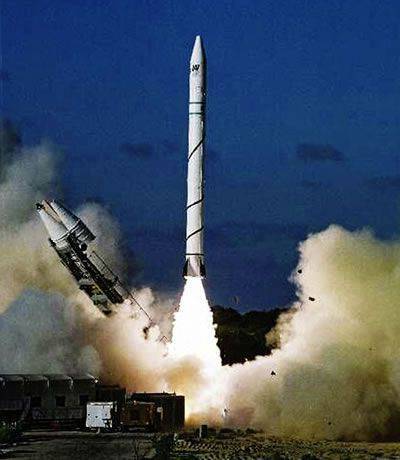
It should be noted that in peacetime, the launchers of the Jericho-1 (Jericho-2) missiles are located in specially equipped underground structures at the Kfar-Zakharia rocket base, located 38 km south of Tel Aviv.
The Israeli missile program further developed a three-stage Jericho-3 rocket, the first test of which was carried out in January of 2008, and the second in November of 2011. It is capable of delivering a 1000-1300 kg head piece over 4 thousand. km (according to the western classification - intermediate range). The adoption of the Jericho-3 rocket is expected in 2015-2016. Its launch weight is 29 tons, and the length is 15,5 m. In addition to the monoblock one, this type of missile is capable of carrying a divided warhead with several individual-directed warheads. It is supposed to be based both in mine launchers (silos) and on mobile carriers, including railway ones.
The Shavit space launch vehicle can be considered a potential vehicle for delivering nuclear weapons. This is a three-stage solid-fuel rocket, created by American technology. With it, the Israelis put five 150 kg spacecraft into low low-Earth orbits. Experts believe the American National Laboratory. Lawrence, the Shavit booster can be modified quite easily into an intercontinental combat missile: up to 7,8 thousand km with the 500-kilogram head part. Of course, it is located on a bulky ground launcher and has considerable preparation time for the launch. At the same time, constructive and technological solutions achieved during the development of the Shavit launch vehicle can be used in the development of combat missiles with a firing range of over 5 thousand km.
In addition, Israel’s military has sea-based cruise missiles capable of carrying nuclear weapons. Most likely, these are the American-built Sub Harpoon cruise missiles with Israel’s range of 600 km (according to other sources, they are Popeye Turbo missiles with a range of 1,5 thousand km.). These cruise missiles are placed on six German-made Dolphin diesel-electric submarines.
Potentially Israeli ballistic missiles of intermediate (in the long term - intercontinental) range, equipped with a nuclear warhead, can create a real missile threat for Europe. However, this is basically impossible, as long as the Jewish population in the country is in the majority. Until 2020, a global change in the national composition of the State of Israel is not expected (now Sunni Arabs make up 17% of its population).
IRAN
Currently, the armed forces of the Islamic Republic of Iran (IRI) are different types of mainly single-stage ballistic missiles.
Solid fuel:
- Chinese WS-1 and Iranian Fajer-5 with a maximum range of 70 – 80 km. The 302-mm WS-1 rocket and 333-mm Fajer-5 rocket, which was created based on North Korean counterparts, have a warhead weighing 150 kg and 90 kg, respectively. Four missiles of the indicated types are placed on one PU.
- Zelzal-2 and Fateh-110 rockets with a range of up to 200 km;
The Zelzal-2 rocket was created in 1990-ies. with the help of Chinese specialists, it has a diameter of 610 mm and a warhead weighing 600 kg. Only one missile of this type is placed on one PU. According to American data, the upgraded version of the Zelzal-2 rocket was put into service in 2004, and its flight range was increased to 300 km.
The Iranians started the development of the Fateh-110 rocket in 1997, its first successful flight tests took place in May, 2001. The upgraded version of this rocket was named Fateh-110А. It has the following characteristics: diameter - 610 mm, weight of the head part - 500 kg. Unlike other short-range Iranian missiles, the Fateh-110А has aerodynamic quality and is equipped with a guidance system (according to American data, rather coarse).

Mixed type rockets:
Chinese CSS-8 (DF-7 or M-7) and its Iranian version Tondar with a range of up to 150 km. At the end of 1980's Tehran purchased 170 to 200 missiles of this type with an 200-kilogram warhead. This is an export version of the missile, created on the basis of the HQ-2 anti-aircraft guided missile (the Chinese equivalent of the Soviet C-75). Its first stage is liquid, and the second - solid fuel. The CSS-8 missile has an inertial control system that is resistant to external influences and a warhead weighing 190 kg. According to reports, Iran has 16-30 launchers for launching missiles of this type. The Iranian version of the CSS-8 rocket is called Tondar.
Liquid:
- Shahab-1 rocket with a range of up to 300 km.
The single-stage ballistic missile P-17 (according to NATO classification - SCUD-B) and its upgraded counterparts (primarily North Korean) created in the Soviet Union served as the basis for the creation of the Iranian ballistic missile Shahab-1. During its first flight test design, the 320 km range was provided with an 985 kg payload. Serial production of missiles of this type began in the second half of the 1980-ies. with the help of North Korean specialists and continued until 1991, the KVO Shahab-1 is 500-1000 m.
- Rocket Shahab-2 with maximum range 500 km.
During the 1991-1994. Tehran bought more advanced P-250M missiles (according to NATO classification - SCUD-C) in North Korea from 370 to 17, and later a significant part of technological equipment. The P-17M missiles are equipped with a 700 kg head end. Production of this type of missiles, which were called Shahab-2, began on Iranian territory in 1997. Due to the increased flight range and the use of an imperfect control system, the accuracy of the Shahab-2 missiles was low: their QUO was 1,5 km.
The Shahab-1 and Shahab-2 rocket programs were completely curtailed in 2007 (according to other sources, the Shahab-2 missile factory still operates in the Isfahan area with a production rate of up to 20 rockets per month). In general, Iran now has up to 200 Shahab-1 and Shahab-2 missiles, which belong to the class of tactical missiles. They are installed monoblock or cassette head part.
- The Shahab-3 rocket with a range of about 1 thousand km.
When creating a single-stage mid-range ballistic missile Shahab-3, the design solutions of North Korean Nodon-type missiles found wide application. Iran began its testing in 1998 in parallel with the development of the Shahab-4 rocket. The first successful launch of Shahab-3 took place in July of 2000, its mass production began at the end of 2003, with active assistance from Chinese companies.
By August 2004, Iranian specialists were able to reduce the size of the head of the Shahab-3 rocket, upgrade its propulsion system and increase the fuel stock. Such a rocket, denoted as Shahab-3M, has a warhead in the form of a bottleneck, which suggested the placement of cluster munitions in it. It is believed that this version of the rocket has a range 1,1 thousand. Kilos with a weight of the head of the 1 ton.
- Rocket Ghadr-1 with a maximum range of 1,6 thousand. Km;
In September, a new Ghadr-2007 rocket was shown at a military parade in the Islamic Republic of Iran. Its firing range with an 1-kilogram head part is 750 thousand km. It is an upgrade of the Shahab-1,6M rocket.
Currently, Iran has 36 PU single-stage liquid rockets Shahab-3, Shahab-3М and Ghadr-1 as part of two rocket brigades located in the central part of the country. The accuracy of the firing of these missiles is quite low: the QUO is 2-2,5 km.
So far, Iran uses only mobile carriers of Belarusian (Soviet) and Chinese production for their ballistic missiles. However, mine launching facilities were built near Tabriz and Khorramabad. The need for them could arise due to the limited number of mobile PUs.
In addition to tactical missiles (we will include all Iranian short-range missiles, with the exception of Shahab-type missiles), Iran has 112 PU and about 300 other types of ballistic missiles. All of them are united under the rocket command of the Air Force of the Islamic Revolutionary Guards Corps and are directly subordinated to the Spiritual Leader of the Islamic Republic of Iran Ali Khamenei. In this case, short-range missiles are divided into tactical (72 PU as part of one rocket brigade) and operational-tactical (112 PU as part of two rocket brigades).
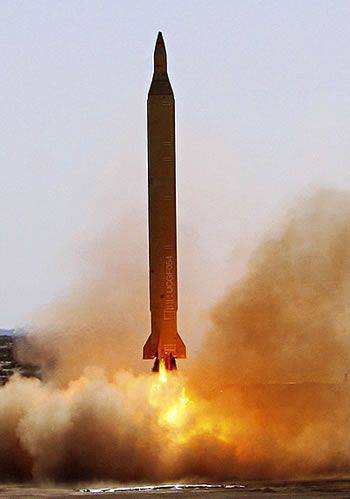
According to some reports, up to 70 ballistic missiles of various types can be produced at Iranian military industry enterprises per year. Their production largely depends on the rhythm of deliveries of components and components from North Korea. In particular, medium-range missiles are assembled at military plants in Parchin, each of which has a capacity of from two to four missiles per month.
Earlier, Tehran planned to develop ballistic missiles Shahab-5 and Shahab-6 with a range of 3 thousand km and 5-6 thousand km, respectively. The program to create Shahab-4 missiles with a range of 2,2-3 thousand. Km was stopped or suspended in October 2003 g. For political reasons. However, in the opinion of Russian and American specialists, the potential for developing missiles in this direction has been largely exhausted. This, of course, does not exclude the creation of multi-stage liquid rockets by Iranians, but it is more likely that the main resources will be concentrated on the improvement of solid-fuel rockets (the scientific groundwork obtained during the development of liquid rockets finds its application in the space sphere).
It should be noted that China provided substantial assistance to Iran in the development of solid-propellant rockets, but the main work was done by Iranian specialists, who for two decades mastered the technology of producing this type of missile. In particular, they created solid-fuel short-range rockets Oghab and Nazeat, which had already been removed from service, as well as the previously mentioned Fajer-5, Zelzal-2 and Fateh-110А. All of this allowed the Iranian leadership in 2000 to raise the issue of developing a ballistic missile with a range of 2 thousand km using solid fuel. Such a rocket was able to create by May 2009, when Tehran announced the successful launch of a two-stage solid-fuel rocket Sejil-2. According to Israeli data, the first launch of the Sejil rocket took place in November 2007. Then the Iranian rocket was represented as Ashura. The second launch of this type of rocket was made on November 18 2008 g. It was also stated that its flight range was almost 2 thousand km. However, only the third flight test, which took place on 20 in May of 2009, was successful.
The maximum firing range of this rocket with a one-tonne head weight is 2,2 thousand. Km. By reducing the weight of the warhead to 500 kg, which eliminates the use of nuclear weapons based on weapons-grade uranium, the firing range can be increased to 3 thousand. Km. The rocket has a diameter of 1,25 m, length - 18 m and take-off weight - 21,5 tons, which allows the use of a mobile home base.
It should be noted that, like all solid-propellant rockets, the Sejil-2 does not require refueling before the launch, it has a shorter active flight segment, which makes it difficult to intercept this most vulnerable segment of the trajectory. And although the Sejil-2 rocket has not been tested since February 2011, its adoption into service in the near future is possible. This is confirmed by the fact that a new launch complex "Shahrud" was created in 100 km north-east of Tehran. According to Western data, there is no storage for liquid rocket fuel at this complex, so it will most likely be used for flight testing of ballistic missiles under the Sejil-2 program.
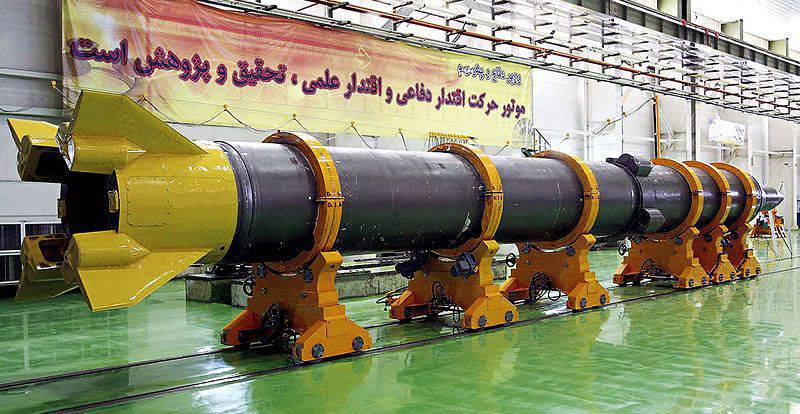
A separate consideration is the question that at the end of August 2011, the Minister of Defense of Iran, Ahmad Vahidi, reported on his country's ability to produce carbon-fiber composite materials. In his opinion, this will "eliminate the bottleneck in the Iranian production of modern military means." And he was right, because carbon-fiber composites play an important role in the creation, for example, of modern solid-propellant rocket engines. This will undoubtedly contribute to the development of the Sejil rocket program.
According to available data, already in 2005-2006. Some commercial structures from the Persian Gulf countries, registered on Iranians, carried out the illegal import of metal-ceramic composites from China and India. Such materials are used in the creation of jet engines as heat-resistant materials and structural elements of fuel assemblies for nuclear reactors. These technologies have a dual purpose; therefore, their distribution is regulated by the missile technology control regime. They could not get to Iran legally, which indicates a lack of effectiveness of export control systems. The mastery of such technologies will contribute to the creation in Iran of modern ballistic missiles.
There is one more field of application of composite materials in rocket and space technology, which is not always paid attention to. This is the production of heat-shielding coating (HRC), which is essential for the creation of warheads (warheads) of intercontinental ballistic missiles (ICBM). In the absence of such a coating, when the head part moves in dense layers of the atmosphere on the descending part of the trajectory, overheating of its internal systems will occur, up to a malfunction. As a result, the head part will fail without reaching the goal. The very fact of conducting research in this area suggests that Iranian specialists can work on the creation of an ICBM.
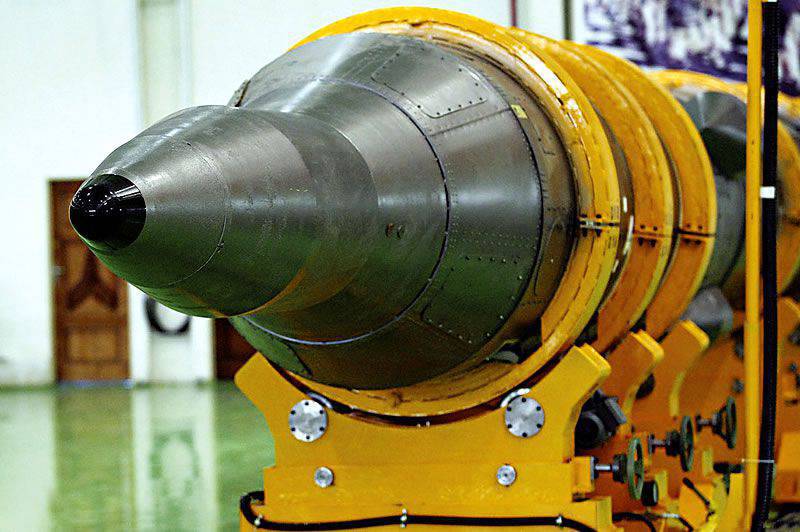
Thus, thanks to close cooperation with North Korea and China, Iran has achieved significant success in the development of a national missile program. Nevertheless, given the mass of nuclear warhead based on weapons-grade uranium suitable for placement on a rocket carrier, it can be concluded that at present Iran’s ability to deliver it using liquid-propellant rockets is limited to 1,3-1,6 thousand kilometers.
According to the joint report of the Russian and American scientists “Iranian nuclear and missile potential” prepared in 2009, it took Iran at least six years to increase the delivery distance to 2 thousand km of payload weighing 1 ton using a liquid rocket. However, such a conclusion, firstly, assumed the preservation of only one-stage rockets in the arsenal of the Islamic Republic of Iran. Secondly, the payload weight limit in the 1 ton was somewhat redundant, which made it possible to increase the missile firing range by reducing the weight of the output load.
Third, the possible Iranian-North Korean cooperation in the field of rocket production was not taken into account.
A report by the London-based International Institute for Strategic Studies, “The Possibilities of Iranian Ballistic Missiles: A Joint Assessment,” published by the 10 in May of 2010, clarified the previously reported data. The report indicated that Iran is unlikely to be able to create a liquid-propellant rocket capable of hitting targets in Western Europe, before the 2014-2015. And the development of a three-stage version of the Sejil solid-fuel rocket, which will be able to deliver a warhead weighing a ton of 1 to a distance of 3,7 thousand km, will take at least four to five years. A further increase in the firing range of the Sejil rocket to 5 thousand km required another five years, that is, it could be implemented by 2020. The authors of the report considered it unlikely that Iranian ICBMs would create an intermediate-range missile. The latter still have low accuracy of fire, which makes possible their combat use only against such area targets as enemy cities.
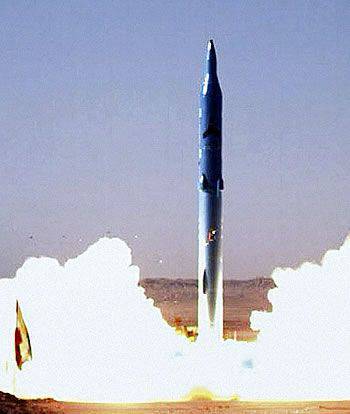
There is no doubt that recent years have confirmed the high competence of Iranian specialists in the design of multi-stage missiles. Consequently, in some perspective they are able to create intercontinental class ballistic missiles (the range is at least 5,5 thousand km). But for this, Iran will have to develop modern guidance systems, provide thermal protection for the head part during its descent in dense layers of the atmosphere, obtain a number of materials needed in rocket production, create marine means of collecting telemetric information and conduct a sufficient number of flight tests with shooting in some area of the World Ocean ( for geographical reasons, Iran cannot provide the firing range of missiles above 2 thousand km along the internal trajectory). According to Russian and American scientists, without substantial external assistance, it may be necessary for Iranian specialists to solve these problems by an additional 10 years.
But, even overcoming all the obstacles described, Iran will receive lightly vulnerable and clearly visible from space ICBMs, which, after being installed on the launch pad, will take considerable time to prepare for launch (the creation of a solid-fuel intercontinental missile still seems a little real). Such missiles will not be able to provide Iran with nuclear deterrence, but will, on the contrary, provoke a preemptive strike on them. Consequently, the Iranians will have to go much further under the conditions of the most powerful pressure from the West.
Based on this, the Iranians most likely decided to concentrate on improving short-range missiles and developing medium-range solid-fuel missiles. However, this created significant technical problems, in particular for the production of large-diameter fuel charges, and also required the purchase of a number of components and materials abroad in the context of international sanctions and tough opposition from Israel, the United States and a number of other Western states. In addition, the completion of the Sejil-2 program was hampered by the economic crisis in Iran. As a result, the implementation of this program may have been suspended, which requires a significant adjustment of previously made forecasts for the development of the Iranian missile potential.
IRAQ
In 1975-1976 The Soviet Union received the ballistic short-range missiles from the Soviet Union: the 24 launcher "Luna-TS" and the 12 launcher P-17 (SCUD-B). Single-stage P-17 liquid missiles have a firing range of up to 300 km with a head mass of 1 t. Significantly smaller range and weight of the head part are characteristic of the Luna-TS rocket complex with a single-stage solid-fuel rocket: the firing range to 70 km with a warhead of XNUM weight kg These missiles have low accuracy. So KVO missiles "Luna-TS" is 450 m.
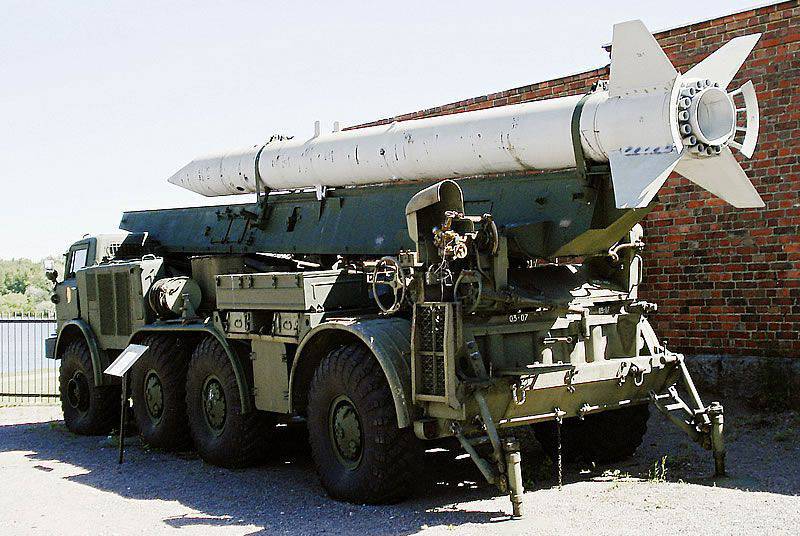
Iraq embarked on a national missile program in 1982. In a war with its eastern neighbor, there was an urgent need to develop ballistic missiles capable of reaching Tehran, located 460 km from the Iran-Iraq border. Initially, for this, the P-17 liquid missiles already delivered by the Soviet Union were partially modernized. Such rockets called Al Husayn had a maximum range of 600 km, which was achieved by reducing the weight of the warhead to 500 kg and lengthening the rocket by 1,3 m. Later, the production of such missiles was mastered. In the course of their further modernization, the Iraqis created an Al Abbas rocket capable of delivering an 300-kilogram warhead to a distance of 900 km.
The first Al Hussein missiles were used against Iran in February 1988. Three years later during the “Gulf War” (1991), Saddam Hussein used missiles of this type against Saudi Arabia, Bahrain and Israel. Due to the low firing accuracy (KVO was 3 km), the effect of their use was mainly psychological. For example, in Israel, one or two people died directly from missiles, 208 was injured (mostly lightly). In addition, four died of heart attacks, and seven from misuse using a gas mask. During rocket attacks, 1302 houses, 6142 apartments, 23 public buildings, 200 shops and 50 vehicles were damaged. The direct damage from this was $ 250 million.
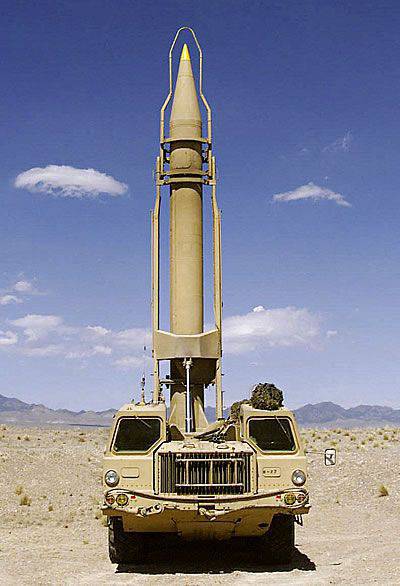
Together with Egypt and Argentina, Iraq attempted to create a two-stage solid propellant missile Badr-2000 (Argentinean name - Condor-2), capable of delivering the head part weighing 500 kg to 750 km. Specialists from West Germany, Italy and Brazil took part in this project. In 1988, due to disagreements of the parties, the project began to curtail. This was facilitated by the fact that after joining the MTCR, West Germany and Italy recalled their specialists from Iraq. The project was completely terminated at 1990.
In addition, in the period 1985-86. From the Soviet Union, the 12 launcher of the Tochka missile system was delivered with a single-stage solid-fuel rocket capable of delivering a 480 kg warhead to a distance of 70 km. Total Iraqis received 36 missiles of this type.
After defeating the Gulf War (1991), Iraq was forced to accept the destruction of its ballistic missiles with a range over 150 km. Thus, by December 2001, under the supervision of the UN Special Commission, X-NUMX launchers of R-32 (Al-Hussein) missiles were destroyed. However, according to Western data, Baghdad managed to keep 17 Al Hussein missiles, to continue until the end of 20, the development of a new ballistic missile with a firing range of up to 2001 thousand km, and also during the 1-1999 period. to attempt to buy Nodon-2002 medium-range missiles in North Korea.
The Iraqi missile program was completely eliminated in the spring of 2003 after the overthrow of the regime of Saddam Hussein. Then all the Iraqi short-range missiles were destroyed. The reason for this was that during the war against coalition troops, Baghdad used at least 17 Al Samoud and Ababil-100 missiles capable of delivering a 100 kg head to the 300 km. In the short and medium term (up to 150), Iraq is not able to create medium-range ballistic missiles on its own. Consequently, it does not even represent a potential missile threat for Europe.
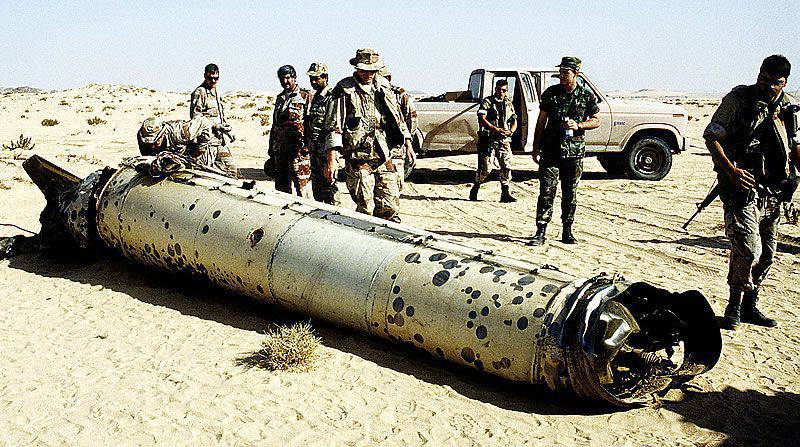
SYRIA
In November 1975, after seven months of training, a missile brigade equipped with Soviet short-range missiles P-17 entered the combat strength of the ground forces of the Syrian Arab Republic (SAR). In total, about one hundred such missiles were delivered. The term of their technical suitability has already expired due to the cessation in 1988 of the production of P-17 missiles at the Votkinsk plant. In the middle of 1980's. 32 of the Tochka missile system was supplied to the SAR from the Soviet Union, and their performance also raises serious doubts. In particular, all of them require a complete replacement of the onboard systems at the Tomsk instrument plant.
In 1990, the Syrian Armed Forces had 61 PU short-range ballistic missiles. The following year, Damascus for funding received from Saudi Arabia for participating in the anti-Iraqi coalition bought the X-NUMX North Korean R-150M (SCUD-C) and 17 launchers for the North Korean missiles. Shipments started in 20.
At the beginning of the 1990's An attempt was made to buy in China solid-fuel missiles CSS-6 (DF-15 or M-9) with a maximum range of 600 km at 500-kilogram head part. This could significantly increase the combat readiness of Syrian missiles (P-17 and P-17М liquid-propellant missiles require considerable time to prepare for the launch). Under pressure from Washington, China refused to implement this contract.
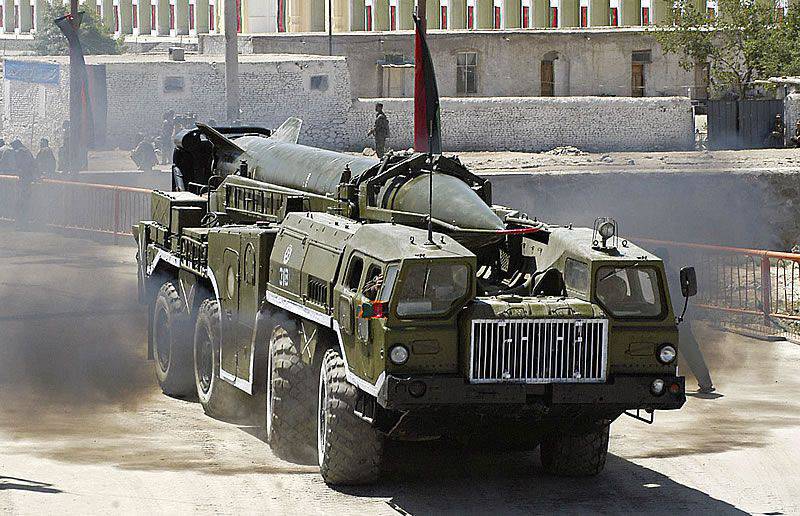
In 1995, the 25 PU of the Р-17 and Р-17М missiles, the 36 PU of the Tochka missile complex remained on the arsenal of the SAR. The Syrian leadership is trying to maximize their technical resource, but there are limits to this process. The inevitability of a significant reduction in the Syrian missile potential is obvious due to the lack of purchases of new ballistic missiles against the background of their combat use against the armed opposition.
In 2007, Syria signed an agreement with Russia for the supply of Iskander-E mobile missile system with a range of up to 280 km with a warhead weighing 480 kg (with a decrease in the head weight, the range can be increased to 500 km). Delivery of the specified missile system has not been implemented. In the short term, the implementation of this contract is unlikely. But even if it is implemented, the range of the Iskander-E missile system is clearly insufficient to create any threat to Europe.
TURKEY
At the beginning of the 1980's commanders of the Turkish ground forces began to show an interest in creating missile systems capable of increasing artillery capabilities and having a deterrent effect on missile threats from the Soviet Union and some other nearby states. The American company Ling-Temco-Vought was chosen as a foreign partner, with which at the end of 1987 a contract was signed for the production of multiple launch rocket systems (MLRS) M-180 and 70 thousand missiles for them in the Turkish territory of 60. To this end, a joint venture was established next year.
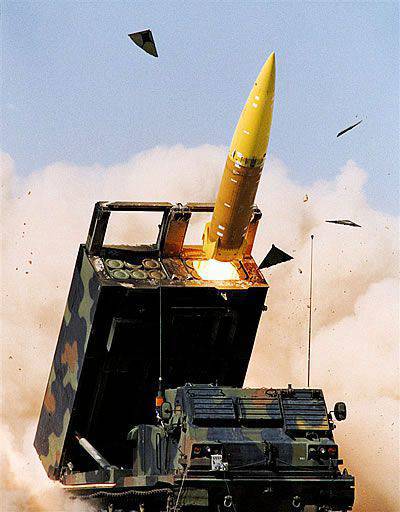
Later in Turkey it was decided that the implementation of this contract, including the transfer of relevant technologies, would not bring tangible benefits. Ankara withdrew from the contract, but under pressure from the command of the ground forces still bought 12 MRLS M-270 systems and more than 2 thousand missiles to them from the US. Such systems are capable of delivering warheads weighing 107-159 kg over a distance of 32-45 km. The M-270 systems arrived in Turkey in the middle of 1992. By this time, Turkish companies had already achieved some success in the production of such systems, so the military leadership refused to purchase additional 24 MRLS-270 in the USA.
In the middle of 1990's. France, Israel and China agreed to help Turkey master the missile technology. The best offer came from China, which led to the signing in 1997 of the relevant contract. As part of a joint project of Kasirga, Turkish production of Chinese 302-mm solid-fuel WS-1 rockets (the Turkish version - T-300) with a range of up to 70 km with a warhead weighing 150 kg was organized in Turkish territory.
The Turkish company ROKETSAN was able to modernize this Chinese missile, which was called the TR-300, and increase the firing range to 80-100 km. As a warhead began to be used cluster munitions. In total, six T-300 (TR-300) missile batteries were deployed, each of which has 6 to 9 PU.
In addition, in 1996-1999. The United States has supplied Turkey with 120 ATACMS and 12 PU solid-propellant short-range ballistic missiles. These missiles provide 160 km firing range with 560 kg warheads. In this case, the QUO is about 250 m.
Currently, the main design center for the creation of ballistic missiles is the Turkish State Research Institute, which implements the project "Joker" (J-600T). Within the framework of this project, solid-fuel single-stage Yyldyrym I (Yelderam I) and Yyldyrim II (Yldarem II) were designed with a maximum range of 185 km and 300 km, respectively.
At the beginning of 2012, at the meeting of the High Council of Technology (High Board of Technology), at the request of Turkish Prime Minister Recep Erdogan, it was decided to build ballistic missiles with a range of up to 2,5 thousand km. The director of the above-mentioned institute, Yusel Altinbasak, informed about this. In his opinion, the goal is achievable, since the ground tests of the rocket with a range of up to 500 km have already passed.
In practice, it has not yet been possible to create a ballistic missile with a range of flight even up to 1,5 thousand km. Instead, in January 2013, it was decided to build a ballistic missile with a range of up to 800 km. The contract for its development was issued by TUBITAK-Sage, a branch of the State Research Institute TUBITAK. The prototype of this rocket is planned to be tested in the next two years.
It is extremely doubtful that in the absence of large-scale external assistance to Turkey, it will be possible even before 2020 to create a ballistic missile with a range of flight up to 2,5 thousand km. The statements made reflect more of Ankara’s regional ambitions, not adequately supported by scientific and technological resources. However, claims to create their own missile capabilities should cause well-founded concern in Europe due to their proximity and the continued Islamization of the country. Turkey’s membership in NATO should not be misleading, given the complex relationship with another member of this organization - Greece, as well as with the EU’s strategic partner - Israel.
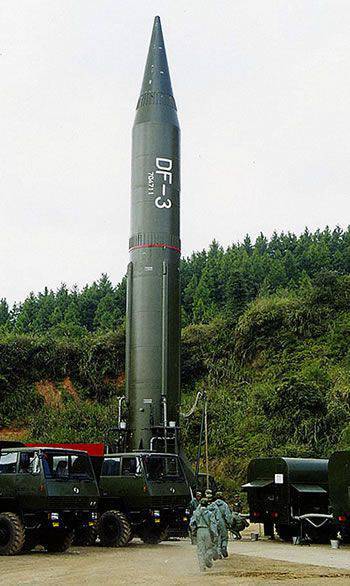
KINGDOM OF SAUDI ARABIA
In 1986, Saudi Arabia signed an agreement with China to purchase CSS-2 (Dongfeng-3A) medium-range ballistic missiles. These single-stage liquid-propellant rockets are capable of delivering the head part weighing 2 tons to the distance 2,8 thousand km (with a decrease in the weight of the head part of the shooting range increases to 4 thousand km). According to the agreement signed in 1988, China supplied 60 missiles of this type with a specially designed high-explosive warhead, which led to the appearance of rocket forces in Saudi Arabia.
Work on the creation of rocket bases in Saudi Arabia (Al-Kharip, Es-Sulei'il and Al-Raoud) was carried out by local firms with the help of Chinese specialists. Initially, training was carried out only in China, but then its own specialized training center was formed. The Saudis denied the Americans inspection of missile objects, but they assured that the missiles have only conventional (non-nuclear) equipment.
Adopting outdated even at that time missiles that had low accuracy, did not really increase the combat power of the armed forces of Saudi Arabia. This was more an act of prestige than was of practical use. Saudi Arabia now has fewer 40 missiles for CSS-2 and 10 launchers. Their current performance is highly questionable. In China, all missiles of this type were removed from service in 2005.
In the framework of the Arab organization of the military industry in 1990-ies. An enterprise for the production of short-range ballistic missiles and Shahin anti-aircraft missile systems was built in Al-Kharj. This allowed the company to begin production of its own short-range ballistic missiles. The first launch of such a missile with a range of 62 km took place in June 1997.
UNITED ARAB EMIRATES
In the second half of the 1990's. The UAE acquired six short-range missile launchers P-17 (SCUD-B) with a range of up to 300 km from one of the republics in the post-Soviet space.
YEMEN
At the beginning of the 1990's The Yemeni armed forces had 34 mobile launchers of Soviet short-range ballistic missiles P-17 (SCUD-B), as well as Tochka and Luna-TS missile systems. During the civil war of 1994, both sides used these missiles, but it had a greater psychological effect. As a result, by 1995, the number of short-range ballistic missile launchers was reduced to 12. According to Western data, Yemen now has X-NUMX P-33 missiles and six of their launchers, as well as 17 rocket launchers "Tochka".
AFGHANISTAN
Since 1989, the Soviet P-17 missiles were in service with the rocket battalion of the Special Purpose Guard of the Democratic Republic of Afghanistan. In 1990, the Soviet Union, in the framework of providing military assistance to Kabul, additionally supplied 150 missiles R-17 and two launchers of the Luna-TS missile system. However, in April 1992, the armed opposition entered Kabul and overthrew the authority of President Mohammad Najibullah. At the same time, the militants of the field commander Ahmad Shah Masoud captured the base of the 99 brigade. Including they seized several PU and 50 P-17 missiles. These missiles were repeatedly used during the civil war 1992-1996. in Afghanistan (a total of X-NUMX P-44 missiles were used). It is possible that the Taliban were able to get a certain number of missiles of this type. So, in the period 17-2001. The Taliban used the P-2005 rocket five times. Only in 17, the Americans destroyed in Afghanistan all the PU missiles of this type.
Thus, in the Near and Middle East, the most developed missile programs are Israel and Iran. Tel Aviv is already creating intermediate-range ballistic missiles, which could create a potential missile threat for Europe in the event of a global change in the national composition of the country. However, this is not to be expected before 2020.
Iran, even in the medium term, is not able to create an intermediate-range ballistic missile, so it serves as a potential threat only for nearby European countries. To contain it, it is quite enough to have an anti-missile base in Romania and already deployed radars in Turkey and Israel.
The ballistic missiles of Yemen, the United Arab Emirates and Syria do not pose any threat to Europe. Due to the lack of industrial infrastructure, the missiles of these states cannot be upgraded independently. They are completely dependent on the supply of missiles from abroad.
Turkey may create some anxiety for Europe due to its close proximity, difficult relations with Greece, Islamization of the country and strengthening of its regional ambitions. Under these conditions, the Turkish leadership’s decision to create ballistic missiles with a range of up to 2,5 thousand km, not yet supported by real scientific and technical potential, should increase the attention of Brussels in this direction.
Saudi Arabian mid-range ballistic missiles may pose a potential threat to some European states. However, there are serious doubts about the very possibility of their launch, and the defense of this country against such a serious external enemy as Iran without the introduction of US troops (NATO) is in principle impossible.
STATES OF POST-SOVIET SPACE
During the collapse of the Soviet Union, the following types of ICBMs were located on the territory of Ukraine, Belarus and Kazakhstan: 104 PU SS-18 Voyevoda, 130 PU SS-19, 46 PU SS-24 “Good for you” and 81 SS-25 Topol. In accordance with international commitments, SS-18 missiles were eliminated in 1996, SS-19 and SS-24 missiles a little later, and all Topol mobile ground-based missile systems were relocated to Russia.
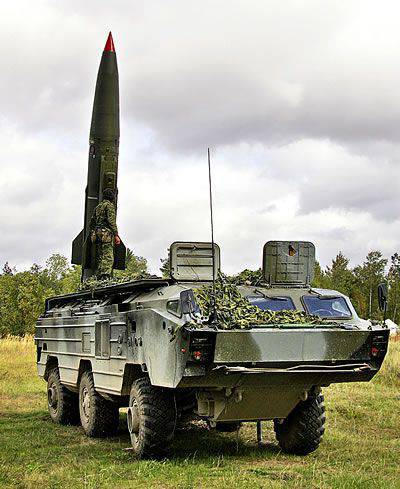
In the post-Soviet space, Armenia, Kazakhstan and Turkmenistan have short-range P-17 ballistic missiles. Because of their geographical distance, they cannot pose a missile threat to Europe. Until May, 2005 Belarus also had P-17 missiles as part of a mixed-type missile brigade. In 2007, missiles of this type were decommissioned in Ukraine, their disposal ended in April 2011.
Missile systems "Tochka" ("Tochka-U") with a firing range of up to 120 km are in service with Azerbaijan, Armenia, Belarus, Kazakhstan and Ukraine. Among them, only Belarus and Ukraine can pose a hypothetical missile threat to neighboring European states. However, in view of the short range and altitude of the flight, as well as the use of a warhead in conventional (non-nuclear) equipment for countering such a threat, there are enough air defense facilities deployed in Europe.
The risk of missile proliferation from Ukraine poses a much greater threat, and for the entire international community. This was already the case in 2000-2001, when the Ukrainian company Progress, a subsidiary of Ukrspetseksport, sold strategic X-55 air-launched cruise missiles to Iran and China. By this time, Ukraine had joined the Missile Technology Control Regime. By selling the X-55 cruise missiles, she grossly violated the MTCR, since the range of this missile’s flights is 2,5 thousand km with a mass of 410 warheads kg. And in the summer of 2005, during the period when this problem arose, Oleksandr Turchynov headed the Security Service of Ukraine, and Petro Poroshenko was the secretary of the National Security and Defense Council of Ukraine. Soon both of them were dismissed from their posts.
In April, 2014, when Oleksandr Turchynov was already acting as President of Ukraine, the Russian Foreign Ministry issued a statement in which he expressed concern about the threat of Ukraine’s uncontrolled proliferation of rocket technologies. So, 5 of April of this year in Turkey, negotiations of the delegation of the State Enterprise “Production Association of the Southern Machine-Building Plant named. A.M. Makarova ”(Dnepropetrovsk) with representatives of the Turkish side on the sale of technical documentation and production technologies for the strategic rocket complex P-36М2“ Voevoda ”(according to the NATO classification SS-18“ Satan ”). This missile system is still in service with the Russian Strategic Missile Forces, even selling documentation on its production is a flagrant violation by Ukraine not only of the MTCR, but also of many other international obligations, including those arising from the Treaty on the Non-Proliferation of Nuclear Weapons. It is this, and not the mythical rocket threats to Europe, including from the territory of the post-Soviet space, that is the main problem of the entire international community. It’s another thing, as far as it is realized in Kiev, where the president is the aforementioned Petro Poroshenko.
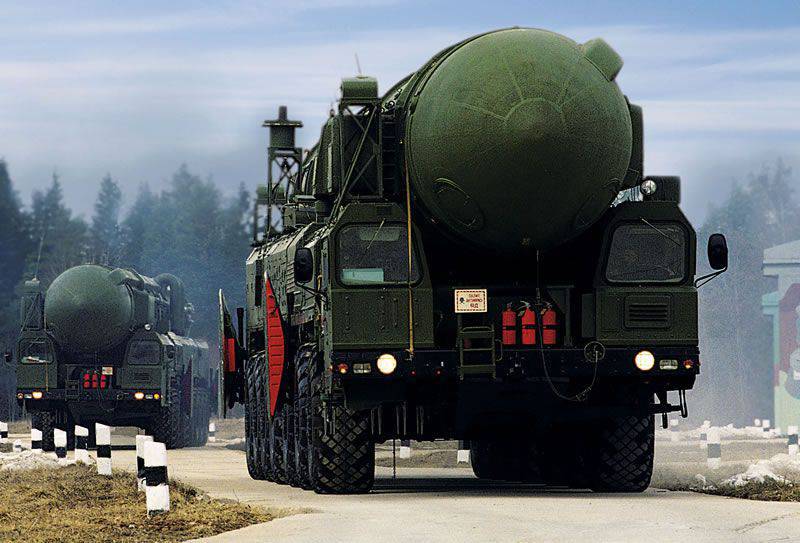
SOUTH AND SOUTHEAST ASIA
INDIA
The de facto nuclear state of India has the largest missile potential in South and Southeast Asia. It includes short-range liquid ballistic missiles of the Prithvi type (Prithvi) and medium range solid propellant: Agni-1, Agni-2 and Agni-3 (Agni), capable of delivering the head part to the 1 ton by 1,5 distance , 2,5 and 3,5 thousand km, respectively. All of them are equipped with conventional cluster-type warheads, and work is underway to develop nuclear warheads for them. As part of the Comprehensive Program for the Development of Guided Missile Weapons, Bharat Dynamics Limited is the lead company in the implementation of the missile program.
The Prithvi missiles were developed on the basis of the Soviet B-755 anti-aircraft guided missile C-75 anti-aircraft missile system (SAM). At the same time, according to some estimates, up to 10% of the technologies used, including the rocket engine and guidance systems, were of Soviet origin. The first launch of the Prithvi-1 rocket took place in February 1988. In total, 14 flight tests were conducted, of which only one was unsuccessful. As a result, industrial production of this type of missiles began in 1994.
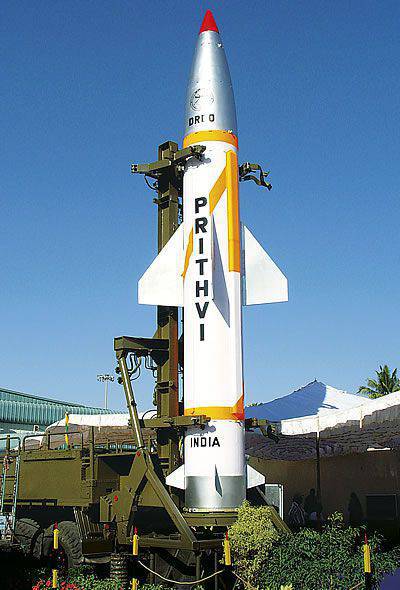
The Prithvi-1 (SS-150) missile is used in ground forces. It has a mobile base, its maximum range is 150 km with a weight of 800-1000 kg. To date, more than 150 missiles of this type have been launched, which are not supposed to be equipped with nuclear warheads. In the expanded state is about 50 PU missiles of this type.
Further modifications of this one-stage rocket were developed: Prithvi-2 (the first flight tests were carried out in 1992) for the Air Force, Dhanush and Prithvi-3 for the naval forces (Navy). The tests of the latter began in 2000 and 2004, respectively. All missiles of these modifications are capable of carrying nuclear warheads, but in reality they use high-explosive, cluster and incendiary warheads.
The Prithvi-2 rocket (SS-250) also has a mobile base. Its firing range reaches 250 km at the head of the 500-750 kg. Already produced more 70 such missiles. It is believed that missiles of this type will be used only in non-nuclear equipment.
The Prithvi-3 and Dhanush missiles have a similar range with the 750 kg head unit, they are planned to be placed on surface ships. There is no complete clarity regarding their production volumes. It is only known that the Indian Navy plans to buy Prithvi-80 3 missiles, but so far there are no ships with launchers necessary for their launch. Most likely, at least 25 Dkhanush missiles have already been produced.
The cost of one Prithvi missile is about $ 500 thousand, and their annual production rate ranges from 10 to 50 missiles. Delhi is considering the possibility of exporting missiles of the specified family, so as far back as 1996, rockets of this type were included in the country's export product catalog.
When developing longer-range ballistic missiles, India actively used the assistance of the Soviet Union (Russia), Germany and France, but mainly rocket science relied on its own scientific and production base. A major achievement in this area was the creation of Agni rockets, the first flight tests of which began in 1989. After a series of flight tests in 1994, work on the Agni project was suspended, mainly under pressure from the United States. In 1995, it was decided to build a more advanced rocket as part of the Agni-2 project.
Work on this project sped up after the summer of 1997. Pakistan began flight tests of the Khatf-3 ballistic missile. The first tests of the Agni-2 rocket took place in 1999. In 2001-2004. India completed a series of flight tests of a single-stage Agni-1 rocket and two-stage Agni-2, which made it possible to start their mass production at Bharat Dynamics (developed by Advanced System Laboratory in Hyderabad). Apparently, more than 100 missiles of these types were produced at the annual production rate of 10-18 units. The Agni-1 rocket costs $ 4,8 million, and the Agni-2 launches $ 6,6 million.
A feature of the Agni-1 rocket is that its trajectory of the head part is corrected according to the radar map of the terrain, which provides the CSP to 100 m. These missiles are placed on mobile launchers: tracked and wheeled.
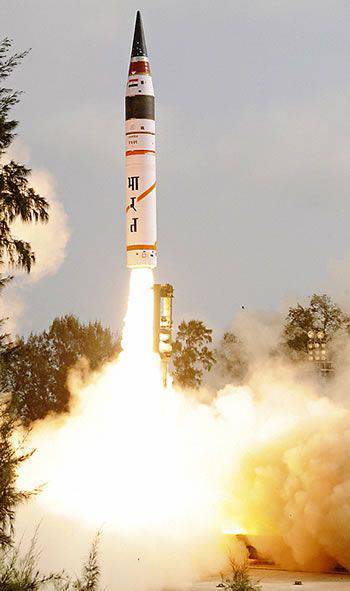
In 2006, a two-stage Agni-3 rocket was successfully tested with a range of up to 3,5 thousand km with a head part weighing 1,5 tons. In 2011, it was adopted.
A two-stage Agni-4 rocket (Agni-2 Prime) is being developed, which was successfully launched in November of 2011. It has composite rocket engines, an improved gear separation mechanism and a modern navigation system. The firing range of the Agni-4 practically does not differ from the Agni-3 rocket. In the near future, the rocket "Agni-4" can be adopted.
At their base, a three-stage Agni-5 missile is being created, which was tested in April 2012 in April. Its maximum range with the head part in 1,5 tons exceeds 5 thousand km, which allows hitting targets in China. The Agni-5 rocket has a starting weight of 50 tons, its length is 17,5 m, and the diameter is 2 m. It is supposed to equip the missile with a split head with several warheads of individual guidance. It can be used from mobile carriers, including rail. This missile is planned to be put into service in 2015. In addition, plans for the development of missile weapons provide for the creation of a Surya ICBM with a range of 8-12 thousand km.
It is assumed that missiles like "Agni" will be equipped with nuclear warheads of 100 kt. At the same time, work is underway to improve the conventional warhead, which may include self-guided anti-tank missiles or a volume explosion ammunition.
In India, a two-stage solid-fuel sea-based missile K-15 ("Sagarika") is being developed, which will be installed on submarines. Its maximum flight range will be 750 km with a head-end from 500 to 1000 kg. The ground version of the K-15 - Shourya rocket has already passed a series of successful flight tests.
In addition, a more advanced ballistic missile for submarines K-4 with a range of up to 3,5 thousand km is being created at the head part of 1 ton. Missiles of these types can be placed on nuclear submarines (APL) of the Arikhant type. In total, it is planned to build five such submarines, sea trials of the first of them began in 2012, two more submarines are at different stages of construction. Each submarine worth about $ 3 billion is equipped with four launchers and is capable of carrying 12 K-15 missiles or four more powerful K-4 missiles.
India is developing a subsonic Nirbhay airborne cruise missile with a range of up to 1 thousand km. She will be able to carry a nuclear warhead.
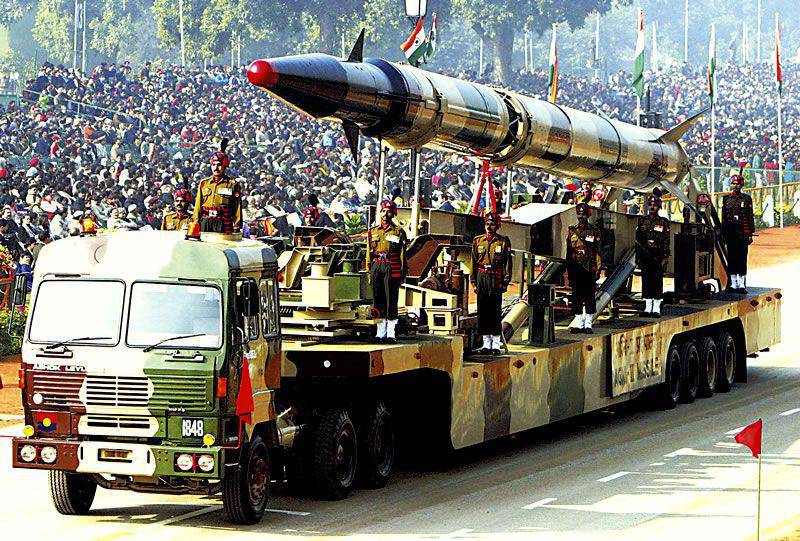
PAKISTAN
The de facto nuclear state of Pakistan has also been able to create significant missile capabilities in the composition of small ballistic missiles (Hatf-1, Hatf-2 / Abdully, Hatf-3 / Ghaznavi, Hatf-4 / Shahin-1) and medium ("Hatf-5 / Gauri-1", "Hatf-5А / Gauri-2", "Hatf-6 / Shahin-2") range. Now Pakistani ground forces are armed with two types of mobile-based ballistic missiles - liquid and solid propellant. All of them are equipped with conventional warheads, and work is underway to create nuclear warheads for them. It is possible that Islamabad already has several experimental samples of them.
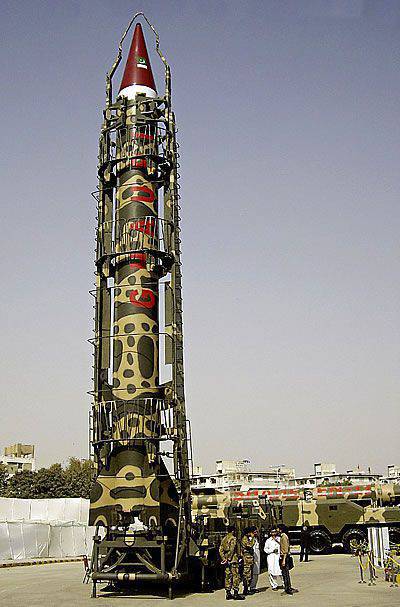
The liquid type of rockets includes a single-stage rocket “Gauri-1” (Ghauri, Hatf-5 or “Hatf-5”) and a two-stage “Gauri-2” (Ghauri II, Hatf-5А or “Hatf-5”). "Gauri-1" was adopted in 2005, has a range of up to 1,3 thousand. Km with a head of 1 ton weight. The Gauri-2 has a maximum range of 1,5-1,8 thousand km with a 700-kilogram head part. Both missiles were created with significant design and engineering participation by specialists from North Korea. Their prototypes are the North Korean Nodon-1 and Tephodon-1 rockets, respectively.
All Pakistani short-range ballistic missiles are solid propellant. They were created with technical support from China and have the following firing range:
- “Hatf-1” (adopted for service in 1992) - from 70 to 100 km with a head part of 500 kg;
- “Hatf-2 / Abdully” (in service with 2005) - from 180 to 260 km with the head section from 250 to 450 kg;
- “Hatf-3 / Ghaznavi” (in service with 2004) - up to 400 km with a head part 500 kg;
- “Shahin-1” - over 450 km with head part from 700 to 1000 kg.
On the Khatf-1 and Khatf-2 / Abdally rockets it is planned to use the head part only in non-nuclear equipment.
A special place among them is occupied by a single-stage mobile base based Shaheen-1 (Shaheen I, Hatf-4 or Hatf-4) with a flight range of up to 650 km with a head weight of 320 kg. Its first flight tests were carried out in April 1999 g., Was adopted in 2005 g. This rocket is equipped with the usual head part of two types: high-explosive and cluster, in the long term - nuclear. It is a Pakistani version of the Chinese Dongfang 15 rocket (CSS-6).
Flight design tests of a two-stage solid-propellant “Shaheen-2” missile (Shaheen II, Hatf-6 or Hatf-6), which was first shown in 2000 at a military parade in Islamabad (it is possible that 10 was already produced missiles of this type). It has a firing range of up to 2,5 thousand km with a head part weighing 700 kg and is installed on a mobile PU. Only this rocket can sweep the entire territory of India.
Pakistan is developing a short-range ballistic missile “Hatf-9 / Nasr” with a range of up to 60 km. It is distinguished by high accuracy of shooting and the use of mobile multi-barreled PU. It also creates a ground-based cruise missile "Hatf-7 / Babur", which has a range of 600 km with a head part of 400-500 kg. It is capable of carrying nuclear weapons, its launch is carried out from a three-barreled mobile launcher.
In addition, work is underway to create a Khatf-8 / Raad air-launched cruise missile capable of delivering a nuclear warhead to a distance of 350 km. It is made using stealth technology, has high maneuverability and is capable of flying at extremely low altitudes with rounding of the terrain.
According to reports, of the 360 ballistic missiles available to Pakistan, only 100 can be equipped with nuclear warheads. Moreover, Pakistan is increasingly using weapons-grade plutonium for their manufacture, which is determined by its significantly lower critical mass.
There are no ballistic missiles in the armament of states of Southeast Asia. The exception is Vietnam, which from the Soviet Union was supplied a number of missiles P-17. Currently, the performance of these missiles raises serious doubts.
Thus, before 2020 in South Asia, only India can create an IDB that does not have any confrontational potential with Europe. Pakistan’s promising ballistic missiles have a clearly insufficient range to reach even European borders. Southeast Asian states have no missile potential at all.
EAST ASIA
KOREAN PEOPLE'S DEMOCRATIC REPUBLIC
By the time of the successful nuclear test in May 2009, the DPRK had already created the appropriate carriers - single-stage short-range and medium-range liquid-propellant missiles. So, in April, 1984 began flight tests of the North Korean Xvason-5 rocket (Mars-5). It was created on the basis of the Soviet missile R-17 (SCUD-B), samples of which were in the DPRK from Egypt. During six months, six test launches were carried out, of which half were successful. This rocket program was completed with financial support from Tehran. As a result, in 1985, limited production of the specified type of missiles was launched, and in 1987, one hundred of them were delivered to Iran.
The Hwaseong 5 short-range ballistic missile had a length of 11 m, a diameter of about 0,9 m and a starting weight of 5,9 tons. Its maximum firing range was 300 km, with a 1 ton weighing head. The firing accuracy of this rocket was low: the QUO reached 1 km.
In 1987-1988 With the help of China, DPRK specialists have begun to develop a more advanced Hvason-6 rocket based on the Soviet P-17M rocket (SCUD-C). Its first flight tests took place in June 1990. Another four test launches were made in 1991-1993. Most likely, they were all successful. The maximum range of the missile was 500 km with a warhead weighing 730 kg. The CWO of the Hwason 6 rocket increased to 1,5 km, which made it problematic to use it in conventional (non-nuclear) equipment against military targets. The exception was such large objects as military bases. However, in 1991, it was put into service.
According to American data, at the end of 1990's. The Hwaseong-6 ballistic missile was upgraded, which in the USA was called the SCUD-ER. By increasing the length of the fuel tanks and reducing the weight of the head section to 750 kg, it was possible to achieve a maximum range of 700 km. When this was used detachable head with a small aerodynamic quality. This increased not only the stability of the missile flight, but also the accuracy of shooting.
The above ballistic missiles allowed Pyongyang to hit targets on the Korean Peninsula, but this was not enough to shoot at important targets in Japan, first of all - at the US Air Force "Kadena" on the island of Okinawa. This was one of the reasons for the creation, with the active financial participation of Iran and Libya, of a single-stage medium-range missile Nodon-1. The latter has 15,6 m length, 1,3 m diameter and starting weight 12,4 tons, as well as a detachable head and inertial control system. The maximum firing range of the “Nodon-1” is 1,1-1,3 thousand km with a head part weighing 700-1000 kg. KVO missiles reached 2,5 km.
In the US, it is believed that the implementation of this rocket program began in 1988 with the participation of Russian, Ukrainian and Chinese specialists. At the same time, especially the significant assistance to the North Koreans was rendered by the representatives of the Design Bureau to them. V.P. Makeeva (now it is OAO “State Rocket Center named after academician VP Makeyev”), who in the Soviet Union were the main experts in the field of the creation of ballistic missile submarines. In their opinion, all this allowed even in the absence of a successful flight test to begin the limited production of Nodon-1 ballistic missiles already in 1991. In the next two years, negotiations were held on the export of missiles of this type to Pakistan and Iran. As a result, Iranian specialists were invited to the flight design test of the Nodon-1 rocket, which took place in May 1993. These tests were successful, but for geographical reasons, the missile's firing range had to be limited to 500 km distance. With a greater flight range, there could be a threat of a missile entering the territory of Russia or Japan. In addition, there was a threat of interception of telemetric information by the Americans and their allies through the use of marine surveillance.
At present, the DPRK ground forces have a separate missile regiment armed with Hwason-6 missiles and three separate missile battalions armed with Nodon-1 missiles. These missiles are transported on a mobile launcher and have a high-explosive or cluster warhead. Potentially, they can act as carriers of nuclear weapons.
It should be noted that during the military parade in Pyongyang 11 in October 2010 two new types of single-stage mobile-based missiles were shown. One of them resembled the Iranian rocket "Gadr-1", and the second - the Soviet sea-based rocket P-27 (SS-N-6). In the West, they were given the names "Nodon-2010" and "Musudan" (Musudan).
Regarding the Nodon-2010 rocket, they began to believe that North Korean specialists were actively involved in the development of the Iranian Gadr-1 rocket. Consequently, missiles of this type were either delivered from Iran as compensation for technical assistance provided, or the DPRK was transferred to the technology of production of this missile. In this case, it was possible to use the results of flight tests of the Qadr-1 rocket, conducted on Iranian territory.
For seemingly obvious, these assumptions are controversial. First, recently, Iran and North Korea have been under intense attention from the intelligence structures of many states. In particular, all actions in this direction of Tehran are carefully monitored by Washington and Tel Aviv. Under these conditions, it would be difficult to organize the export to the DPRK of even a small batch of ballistic missiles. Secondly, the supplied missiles must be serviced, which requires a constant supply of spare parts and related equipment. Thirdly, the extremely limited resources of North Korea make it difficult to master the production of a new type of missile for three to four years (for the first time, the Qadr-1 rocket was shown in Iran at a military parade in September of 2007). Fourthly, despite the close cooperation between Pyongyang and Tehran in the field of rocket production, no convincing evidence of the transfer of such technologies to the DPRK was revealed. Similar is the case in the nuclear field.
In relation to the ballistic missile "Musudan" you can see the following.
1. The Soviet P-27 liquid-propellant rocket had a number of modifications, the last of which was put into service in 1974. All of the missiles of the specified type with a firing range of up to 3 thousand km were removed from armament to 1990. Resumption of production of P-27 missiles of two the last decades in the North Korean territory was technically impossible due to the complete conversion of the relevant Russian enterprises and the dismissal of the vast majority of workers in 1960-1970. Theoretically, they could only transfer technical documentation and some of the components, which most likely would not be sufficient for the development of long-obsolete rocket technologies.
2. Sea-based ballistic missiles are extremely difficult to manufacture. Therefore, Russia, which has vast experience in rocket production, has been developing the Bulava-30 missile system for a long time. But why do the DPRK, which does not have the appropriate sea carriers? It is much easier to create a ground-based missile complex at once. In this case, there will be no problem of loss of vertical stability at launch (unlike a submarine, the ballistic missile launcher is rigidly fixed on the earth's surface) or to overcome the aquatic environment, where the launch of the first-stage sustainer is impossible.
3. No one can rule out the fact that North Korean specialists copied some components of Soviet missiles. But this does not mean that they managed to make the ground version of the P-27 rocket.
4. The Musudan rocket shown in the parade had a mobile medium that did not correspond to its size (too large). Moreover, it was 2 m longer than its prototype. In this case, we can talk not just about copying, but about upgrading the P-27 rocket. But how could such a missile be put into service without at least one of its flight tests?
5. According to the information provided on the WikiLeaks website, the DPRK delivered 19 ballistic missiles BM-25 (Musudan) to Iran. However, this was not confirmed by anyone, primarily the United States and Israel. Never has this type of missile been used by Iran during numerous military exercises.
Most likely, during a military parade in Pyongyang in October 2010, were shown dummy ballistic missiles. It is premature to assume that they have already been put into service. In any case, before the flight tests of these types of missiles.
According to American data, since the beginning of the 1990's. Pyongyang is working on the creation of two-stage Tepodon-type liquid rockets (their three-stage versions are used as space launch vehicles). This was confirmed in February 1994 by satellite observations. Then it was assumed that the Tepkodon-1 rocket uses the Nodon-1 as the first stage, and the Hvason-5 or the Hvason-6 as the second stage. Regarding the more advanced Tepkodon-2 rocket, they began to believe that its first stage is the Chinese DF-3 rocket or a bunch of four Nodon-type engines, and the second stage is the Nodon-1. It was believed that Chinese specialists took part in the creation of the Tepkodon-2 rocket.
The first flight test of the three-stage version of the Tepkodon-1 rocket took place in August 1998 g. Then it was 24-25 m long and had a starting weight of about 22 tons. Its first and second stages worked normally, the third stage separated, but soon, together with the satellite, it fell into the Pacific Ocean. At the same time, the flight range was 1,6 thousand km. Analysis of the data obtained confirmed that the Nodon-1 rocket was used as the first stage. However, at the second stage - the engine of the Soviet anti-aircraft missile, used in the morally obsolete C-200. The third stage, most likely, was also represented by the obsolete Soviet rocket complex "Tochka" (its North Korean version is KN-02).
Apparently, the program "Tepkhodon-1" was soon closed. She wore a more demonstrative (ostentatious) character, since the second stage of the rocket was not very suitable for delivering nuclear weapons, the QUO was several kilometers, and the maximum range of flight was 2 thousand kilometers.
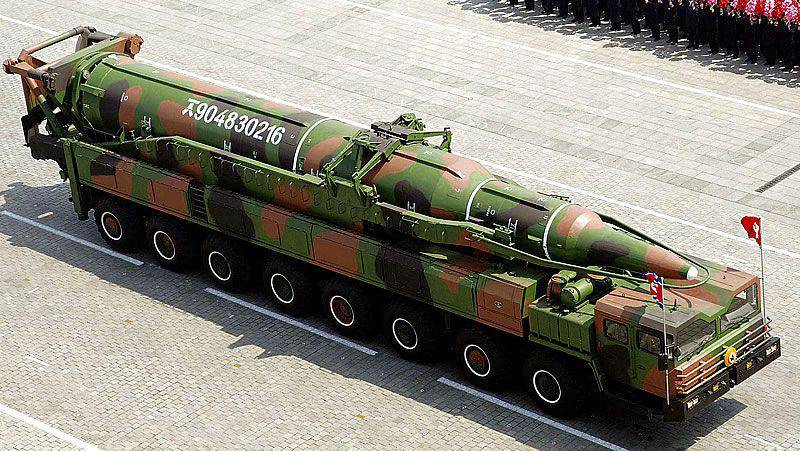
In parallel, the program "Tepkhodon-2" was carried out. The first flight test of this type of missile was conducted in July 2006 g. It was unsuccessful (the flight lasted 42 s, the rocket overcame only 10 km). Then there was extremely limited information on the technical characteristics of this rocket: even its starting weight was estimated in the range from 60 to 85 tons (most likely - about 65 tons). Her first stage really was a bunch of four Nodon-type engines. However, any information about the second stage could not be obtained.
In the future, all information on the Tepkodon-2 ballistic missile was obtained only from the results of launch vehicles launched on its base. So, in April 2009, the launch of the North Korean launch vehicle "Unha-2" took place. She flew over 3,2 thousand. Km. Moreover, its first and second stages worked successfully, and the third, together with the satellite, fell in the Pacific Ocean. During this launch, extensive video information was presented to the international community, which made it possible to identify the tactical and technical characteristics of the rocket. She had a 30 m length and a starting weight equal to 80 tons. Again, the first stage of the rocket was a bundle of four Nodon-type engines. Its second stage turned out to be similar to the previously described Soviet rocket P-27, the third - to "Hwaseon-5" ("Hwaseon-6"). The analysis of this launch convinced Western experts in the existence of the Musudan single-stage rocket.
At the end of 2012, the Eunha-3 launch vehicle successfully launched the Quanmenson-3 satellite into orbit. Soon after, representatives of the naval forces of the Republic of Korea raised an oxidizer tank and fragments of the first stage of this missile from the bottom of the Yellow Sea. This made it possible to clarify the technical level achieved in North Korea in the field of rocket production.
A group of American and South Korean experts was formed to analyze the collected data. Its main task was to convince the international community of Pyongyang's application of ballistic missile technology in the development of the Ynha-3 launch vehicle. It was not very difficult due to the dual purpose of any space technology.
The joint expert group came to the following conclusions. First, the nitrogen-based substance, which is a component of a long-lasting rocket fuel, was used as the oxidizer of the first-stage rocket engines of the North Korean launch vehicle. According to experts, it is more preferable to use liquid oxygen as an oxidizing agent for a booster rocket. Secondly, the first stage was a cluster of four “Nodon-1” rocket engines. Thirdly, the simulation of a missile flight showed its technical capability to deliver a 500-600 kg warhead to a distance of 10-12 thousand km, that is, to an intercontinental firing range. Fourthly, the poor quality of welding and the use of imported components for the production of the rocket body were identified. At the same time, the latter was not a violation of the MTCR.
Noting the importance of the work done, it can be noted that in February 2010, Iran presented to the international community its launch vehicle “Simorg” (Simorgh), which allows launching satellites up to 100 kg into low near-earth orbit. A bunch of four Nodon-1 rocket engines is used as its first stage, and the Gadr-1 rocket plays the role of the second stage. The Simorg and Eunha-3 launch vehicles have a high degree of similarity. Their difference is in the number of stages (the Iranian rocket has two stages) and the use in the North Korean version of a more powerful second stage based on the Musudan rocket.
According to the International Institute for Strategic Studies in London, the third stage of the Ynha-2 launch vehicle is similar to the second stage of the Iranian Safir-2 (Messenger-2) rocket, which in early February 2009 launched into low near-earth orbit first national satellite Omid ("Hope"). Most likely, the third stages of the “Unha-2” and “Unha-3” launch vehicles are identical and are based on the “Hwason-6” rocket.
In the West, it is believed that the flight range of the Simorg Iranian launch vehicle, when used as a ballistic missile, will be up to 5 thousand km with a head part weighing 1 ton. When reducing the weight of the warhead to 750 kg, the range of flights of the rocket will increase to 5,4 thousand km. So far, no successful launch of the Simorg launch vehicle has been recorded.
Considering the more powerful second stage and the presence of the third stage, apparently, we can talk about the possible flight range of the North Korean ballistic missile, created on the basis of the Unha-3 launch vehicle, up to 6-7 thousand km with 750-kilogram head part . However, these estimates require experimental confirmation.
The technical obstacle to the creation of a three-stage intermediate-range ballistic missile (of the order of 5-6 thousand km) by North Korean specialists will be the problem of providing thermal protection of the installed warhead. Unlike medium-range missiles, the height of the head parts of which does not exceed 300 km, the head parts of the missiles, even of intermediate range, rise to heights above 1 thousand kilometers above the Earth's surface. In this case, the speed of their entry into the upper boundary of the atmosphere on the descending part of the trajectory will be several kilometers per second. In the absence of HRC, this will lead to the destruction of the warhead hull already in the upper atmosphere. To date, there are no facts confirming the mastery of North Korean specialists in the technology of production of HRC.
An important characteristic of the missile system is its combat readiness. In the case of long-term preparation of the rocket for launch, there is a high probability of its being hit by the enemy, so you have to consciously reduce the maximum firing range in order to increase the level of combat readiness of the missile complex.
Thus, the North Korean rocket program for creating two- and three-stage ballistic missiles such as Tephodon-2 has ceased to be a myth. Indeed, there is the potential to develop in the DPRK already in the medium term a ballistic missile of intermediate range. However, the missile threat should not be exaggerated. In the absence of sufficient funding and backwardness of the material and technical base, such work is difficult to complete. In addition, the UN Security Council resolution 2087 not only imposed economic sanctions against the DPRK, but also demands the restoration of a moratorium on ballistic missile launches. This will make it difficult for Pyongyang to conduct flight tests of the developed missiles, masking them for launch vehicles.
JAPAN
Japan has a developed scientific, technical and industrial base of rocket production. It successfully implements the national space research program based on its own solid-fuel launch vehicles M-5 and J-1. The existing potential allows Japan to make ballistic missiles of not only medium, but also intercontinental range after the country's leadership makes the corresponding political decision. For this, two space rocket centers can be used: Kagoshi (southern tip of Kyushu) and Tanegashima (Tanegashima island, 70 km south of Kyushu).
THE REPUBLIC OF KOREA
The Republic of Korea (RK) has a significant production base of rocket production, created with the active assistance of the United States. When creating it, it was taken into account that the US Armed Forces use only solid-fuel missiles. It is on this path that we went to the Republic of Kazakhstan.
The development of the first Paccom ballistic missile (Polar Bear) began in the first half of the 1970s. in response to Pyongyang’s missile ambitions. Successful tests of the Packcom missile with a range of up to 300 km were carried out in September on 1978 from the Ankhyn testing range in the province of South Chuncheon. The program was curtailed under pressure from Washington, which did not want to be drawn into the new war on the Korean Peninsula. The Americans took into account the concern on this issue of their other ally - Japan, which has quite a difficult relationship with Seoul. In exchange for South Korea’s refusal of independent missile and nuclear development, the United States pledged to cover it with its “nuclear umbrella” and ensure national security by American forces stationed on the Korean Peninsula and in Japan.
In 1979, the United States and the Republic of Korea signed an agreement to limit the flight range of South Korean ballistic missiles to 180 km (the distance from the demilitarized zone to Pyongyang). Based on this in 1980-ies. on the basis of the American Nike Hercules rocket launcher, a two-stage Nike-KM rocket was developed with a specified range at the 300 kg head unit.
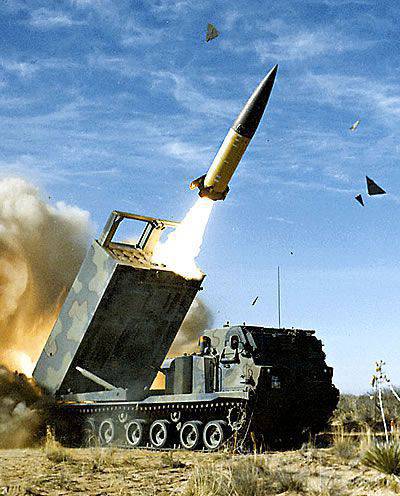
Under pressure from Washington, the South Korean leadership was forced to limit its missile program. Thus, in 1982, a group of specialists who were engaged in the development of promising missiles was disbanded, and the staff of the Institute of Defense Research of the Republic of Korea was reduced three times.
However, in 1983, the upgrade of the Nike-KM ballistic missile was continued. In particular, the entire electronic equipment of the guidance and control systems was replaced with a more perfect, rocket design and layout and its warhead. And after replacing the starting accelerators with more powerful firing range, it increased to 250 km. This modified version of the rocket, assembled almost entirely from its own components, was called the “Hyonmu-1” (“Black Turtle-1”), its first successful flight design test took place in 1985. The production of the Hyonmu-1 ballistic missiles began in 1986. For the first time they were demonstrated to the international community 1 in October 1987 at a military parade on the Day of the Armed Forces of the Republic of Korea.
The two-stage Xenmu-1 ballistic missile has the following characteristics: length - 12,5 m (second stage - 8,2 m), diameter 0,8 m (second stage - 0,5 m) and starting weight 4,9 tons, including 2,5 tons second stage weight. Its maximum flight speed is less than 1,2 km / s, and its height above the Earth’s surface with the 500 kilogram head part is 46 km. The deviation of this rocket from the aiming point does not exceed 100 m, which indicates its rather high shooting accuracy.
The Hyonmu-1 ballistic missile violated the previously signed agreement, so the Americans forced the Republic of Korea to limit its production. As compensation in the period 1997-2000. The United States has delivered modern-day ATACMS Block 1 mobile-based missile systems to Seoul with a range of up to 160 km with a head unit in 560 kg.
In January, 2001. Washington and Seoul concluded a new agreement under which the Republic of Korea pledged to be in the framework of the MTCR. As a result, the flight range of South Korean missiles was limited to the value of 300 km with a payload of 500 kg. This allowed South Korean specialists to begin developing the Hyonmu-2A ballistic missile.
According to some reports, in 2009, when the Americans lost again, Seoul began developing a new Hyonmu-2B missile with a firing range of up to 500 km. At the same time, the weight of the head section remained the same - 500 kg, and the QUO decreased to 30 m. The Hönmu-2A and Hönmu-2В ballistic missiles have a mobile home base.
In addition, in 2002-2006. The United States delivered the RK ATACMS Block 1A ballistic missiles with a maximum range of 300 km (head of 160 kg). The development of these rocket complexes and the implementation of a space program with the help of Russia allowed the South Korean specialists to significantly improve the technical level in national rocket production. This was a technological prerequisite for creating their own ballistic missiles with a firing range over 500 km.
Given the above, the Republic of Korea can in a fairly short time to create a ballistic missile "Hyungmu-4" with a range of 1-2 thousand km, capable of carrying the head part in 1 ton. Washington’s ability to curb Seoul’s missile ambitions is constantly diminishing. Thus, at the beginning of October 2012, the leadership of the Republic of Kazakhstan was able to obtain from the United States an agreement to increase the range of flights of South Korean ballistic missiles to 800 km, which is sufficient for shelling the entire territory of the DPRK, as well as certain regions of Russia, China and Japan.
In addition, the new South Korean missiles will be able to carry warheads heavier than 500 kg, that is, to act as carriers of nuclear weapons, if the appropriate political decision is taken. But at the same time, the firing range of the missiles should be reduced in proportion to the weight gain of the warhead. For example, with a missile range equal to 800 km, the weight of the warhead should not exceed 500 kg, if the range is 300 km, then the weight of the warhead can be increased to 1,3 tons.
At the same time, Seoul was given the right to produce heavier unmanned aerial vehicles. Now their weight can be increased from 500 kg to 2,5 tons, which will allow them to be used in a shock version, including with cruise missiles.
It should be noted that during the development of airborne cruise missiles, Seoul did not experience any limitations in flight range. According to reports, this process began in 1990's, and the American high-precision cruise missile Tomahawk was chosen as a prototype, on the basis of which South Korean specialists made the Hyonmu-3 rocket. From the American counterpart it is distinguished by improved accuracy characteristics. A serious disadvantage of this type of missile is subsonic flight speed, which facilitates their interception by means of missile defense. However, the DPRK has no such means.
Deliveries to the troops of a cruise missile "Hyungmu-3" with a maximum range of 500 km, most likely, began in 2006-2007. At the same time, air-launched and longer range cruise missiles are being developed. Thus, the Hyonmu-3В rocket has a firing range of up to 1 thousand km, and the Hyonmu-3С rocket has up to 1,5 thousand km. Apparently, the cruise missile “Hyungmu-3B” has already been put into service, and the “Hyungmy-3C” is completing the flight test phase.
The main characteristics of the cruise missiles of the “Hyonmu-3” type are: the length is 6 m, the diameter is 0,6 m, the starting weight is 1,5 tons, including the 500-kilogram head part. To ensure high accuracy of shooting, global positioning systems GPS / INS, the American system for correcting the trajectory of TERCOM cruise missiles and an infrared homing head are used.
Currently, South Korean experts are developing sea-based cruise missiles “Cheonnen” (“Sky Dragon”) with a range of up to 500 km. They will go into service with promising diesel submarines "Chanbogo-3", whose displacement will be from 3 to 4 thousand tons. The above-mentioned submarines built according to German technology will be able to stay under water without ascent up to 50 days and carry cruise missiles to 20. It is planned that in 2020, South Korea will receive up to six submarines of this type.
In September, 2012, the President of the Republic of Korea, Lee Myung-bak, approved the “Medium Term Plan for the Development of National Defense in 2013-2017” proposed by the Ministry of Defense. One of the most important elements of this document was a bet on missiles, which were to become the main retaliation weapon and the main response to the nuclear potential of North Korea, as well as its long-range artillery. Seoul, the most important political and economic center of the country, is in the zone of reach of the latter.
According to the plan, the rocket forces of the Republic of Korea were to destroy the 24 large missile bases, all known nuclear facilities and long-range artillery batteries of the DPRK in the first 25 hours of hostilities. To this end, it was planned to purchase 900, primarily ballistic missiles, for a total of about $ 2 billion. At the same time, it was decided to significantly reduce the modernization programs of the national air force and navy.
It was expected that by 2017 the South Korean 1700 ballistic missiles “Hyungmu-2A” and “Hyonmu-2B” (the basis of the missile potential), as well as cruise missiles “Hyungmu-3A”, “Hyungmu-3B” and Hyungmu-3C.
The plans for the implementation of the missile program in Kazakhstan were significantly adjusted after the results of the election of 2012, the President of the country became Park Geun-hye. Unlike its predecessor, it began to focus not on a disarming missile strike, but on the creation of a missile defense system, which led to a reduction in funding missile programs from 2014.
According to the 2014 budget plan submitted by the Ministry of Finance to the National Assembly, the government has requested $ 1,1 billion to build the Korean Anti-Ballistic and Air Defense (KAMD) and the Kill Chain missile defense system. Development of the KAMD system began in 2006, when Seoul refused to join the global US missile defense system.
The Ministry of Defense of the Republic of Kazakhstan announced the need to create the Kill Chain system in June 2013, considering reconnaissance satellites, various aerial surveillance and control systems, multi-purpose fighters and UAV drums as components of this system. All this will make it possible in advance to identify threats to national security from the side of missile systems, as well as combat aircraft and ships, primarily North Korean ones.
The KAMD system will include Israeli-made Green Pine Block-B radar, the American Peace Eye early detection and warning system, Aegis missile control systems with SM-3 anti-missiles and the Patriot PAC-3 anti-aircraft missile systems. In the near future, it is planned to open the corresponding command and control center of the South Korean KAMD system.
Consequently, the missile potential of the Republic of Korea is constantly increasing, which can not but cause concern not only in the DPRK, but also in China, Russia and Japan. Potentially developed in Kazakhstan, ballistic and cruise air and sea-based missiles, after appropriate revision, can be used as means of delivering nuclear weapons based on plutonium, the creation of which for South Korean specialists does not present a significant technical problem. In Northeast Asia, this may lead to a nuclear domino effect when the example of South Korea is followed in Japan and, possibly, in Taiwan, which will lead to the collapse of the nuclear non-proliferation regime at the global level.
Moreover, in Seoul, it was decided to create not only a national missile defense system, but also a system for the preventive destruction of North Korean missiles, which could push the ruling elite to attempt to force their northern neighbor to join. There is no doubt that this, as well as the presence of long-range cruise missiles in Kazakhstan, is a serious destabilizing factor for the security of the entire Korean Peninsula, but does not pose any missile threat to Europe.
TAIWAN
At the end of 1970's With the help of Israel, Taiwan created a single-stage liquid-propelled ballistic missile Ching Feng (Green Bee) with a range of up to 130 km with a head section in 400 kg. She is still in service with Taiwan. In the future, the United States largely restrained Taipei’s missile ambitions.
At 1996, the Zhongshan Institute of Science and Technology (Chung Shan Institute of Science and Technology) under the Ministry of National Defense of Taiwan began to develop a two-stage solid-fuel short-range missile Tien Chi (Sky Halberd) based on the Sky Bow anti-aircraft guided missile in the US Patriot SAMs). Its maximum flight range was 300 km at 200-kilogram warhead. To improve the accuracy of firing this rocket was equipped with a receiver of the NAVSTAR space navigation system. According to some data from 15 to 50, such missiles are housed in silos on islands near the territory of the People's Republic of China.
In addition, the development of a new Tien Ma (Sky Horse) solid-fuel ballistic missile with a firing range of up to 1 thousand km with an 500-kilogram warhead. For this purpose, a test center built in the southern part of the island of Taiwan at Cape Ganzibi is used.
Thus, the states of Northeast Asia have created a significant missile potential, which allows them to produce medium-range missiles. However, due to the geographical remoteness of this region, promising (up to 2020) ballistic missiles of these countries do not pose a real threat to Europe. Hypothetically, an ICBM can only be created by the closest American ally, Japan, if it makes the appropriate political decision.
AFRICA
EGYPT
The first short-range ballistic missiles hit the Arab Republic of Egypt from the Soviet Union at the end of the 1960-x and the beginning of the 1970-s. As a result, already in 1975, APE was armed with nine PU-17 (SCUD-B) missiles and 18 PU-missiles of the Luna-TS missile systems. Gradually, the Luna-TS complexes had to be removed from the armed forces, including due to the reorientation of foreign policy towards the West.
In the period 1984-1988. Egypt together with Argentina and Iraq implemented the rocket program Condor-2 (Egyptian name - Vector). As part of this program, the Abu-Saabal research and production rocket-building complex was built near Cairo.
As mentioned earlier, the goal of the Condor-2 program was to create a mobile missile system equipped with a two-stage solid-fuel rocket with a firing range of up to 750 km. Detached in flight cassette 500-kilogram head part was supposed to be equipped with concrete and fragmentation striking elements. The only test launch of this rocket took place in Egypt in 1989. It was unsuccessful due to a malfunction in the onboard control system. In 1990, under the pressure of the United States, work on the Condor-2 program was discontinued.
In 1980-1990-ies. quite actively cooperation in the field of rocketry developed with Pyongyang. Thus, in 1990, with the help of North Korean specialists, work began on the Project-T program in order to create a ballistic missile with a firing range of up to 450 km. Later, Pyongyang transferred to the Egyptians the technology of creating ballistic missiles R-17M (SCUD-C) with a maximum range of 500 km. This allowed 1995 to begin production on its own territory, but in rather limited quantities.
Under current conditions, the Egyptian missile program is most likely curtailed. In the future, its renewal is possible, and with the help of Russian specialists.
LIBYA
In the second half of the 1970's. The Soviet Union delivered Libya 20 PU missiles R-17 (SCUD-B). Some of them were transferred to Iran at the beginning of the 1980s, which was offset by new supplies. Thus, in the 1985, the Armed Forces of the country already had 54 launchers of P-17 missiles, as well as Tochka missile systems. By 1990, their number has increased even more: to the 80 PU of the R-17 and 40 missiles of the Tochka missile systems.
At the beginning of the 1980's with the assistance of specialists from Iran, Iraq, India and Yugoslavia, they launched their own program to create a liquid single-stage rocket "Al-Fattih" (Al-Fatah) with a range of up to 1 thousand km. The first unsuccessful launch of this rocket was carried out in 1986. It was not possible to implement this program.
With the help of specialists from Egypt, North Korea and Iraq in the 1990s, the Libyans managed to upgrade the P-17 rocket, increasing its firing range to 500 km.
Introduced in April 1992, the international sanctions against Libya weakened, including its missile potential. The reason for this was the inability to independently maintain weapons and military equipment in working condition. However, the full potential of the missile ceased to exist only in 2011 as a result of the military operation of the NATO countries.
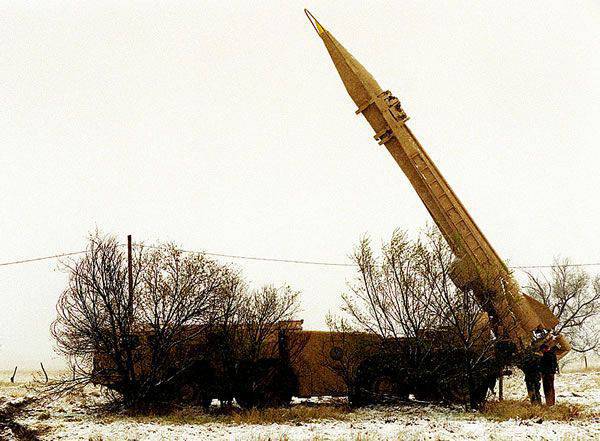
ALGERIA
The armament of Algeria may be 12 launchers missile complex "Luna-TS" (32 missiles). It is possible that Algeria, as well as the Democratic Republic of the Congo, has a certain number of P-17 (SCUD-B) missiles. But these missiles do not even pose a potential threat to Europe.
South Africa
According to some reports, in 1974, Israel and the Republic of South Africa (South Africa) established cooperation in the field of missile and nuclear technologies. South Africa provided Israel with natural uranium and a nuclear test site, and in return received a technology to build a solid-fuel rocket engine, which later found its use in the first stage of a Jericho-2 solid-fuel rocket. This allowed South African specialists to create solid-fuel rockets at the end of 1980-s: single-stage RSA-1 (starting weight - 12 t, length - 8 m, diameter - 1,3 m, flight range from 1-1,1 thousand km with a 1500 kg warhead) two-stage RSA-2 (similar to the Jericho-2 rocket with a range of 1,5 – 1,8 thousand km.). These missiles were not mass produced, since at the end of the 1980-x - the beginning of the 1990-x. The Republic of South Africa has refused both nuclear weapons and its possible missile carriers.
Undoubtedly, South Africa has the scientific and technical capabilities to create ballistic missiles of both medium and intercontinental range. However, there are no compelling reasons for such activities due to a fairly stable regional situation and a balanced foreign policy.
Thus, Egypt, until recently, had limited capabilities for the production of short-range ballistic missiles. In the face of serious internal instability, he cannot pose any missile threat to Europe. Libya completely lost its missile potential as a result of the operation of NATO countries in 2011, but there was a threat of access to these technologies from terrorist organizations. Algeria and the Democratic Republic of the Congo have only short-range missiles, and the Republic of South Africa has no compelling reason to build long-range ballistic missiles.
SOUTH AMERICA
BRAZIL
The Brazilian missile program has been operating since the beginning of the 1980s, when, on the basis of the technologies obtained in the space sector, the Sonda project began developing two types of single-stage mobile solid-propellant mobile missiles: SS? 300 and MB / EE? 150. The first of them had a range of up to 300 km with a head part weighing 1 a ton, and the second (MW / EE? 150) to 150 km with an 500-kilogram head part. These missiles were supposed to be used as carriers for nuclear weapons. At that time, Brazil was implementing a military nuclear program, which was closed in 1990 after the military was removed from political power.
The next step in rocket production was the development of a SS? 600 solid-fuel rocket with a maximum range of 600 km with a 500 kg head end. At the same time, the terminal guidance system for missiles provided a sufficiently high accuracy of shooting. In the middle of 1990's. under pressure from Washington, all of these missile programs were discontinued, and efforts in the field of rocket production were concentrated on the program to create a four-stage VLS launch vehicle for launching light spacecraft to low near-earth orbits.
Constant failures in the creation of the VLS launch vehicle have pushed the Brazilian leadership to use the experience that has been gained in the space sector by Russia and Ukraine. So, in November 2004, Moscow and Brasilia decided to jointly create a family of launch vehicles under the general name “Southern Cross”. A year later, this project was approved by the Brazilian government, and the State Rocket Center “Design Bureau named after V.P. Makeyev ”, whose specialists suggest using their work on light and middle class launch vehicles, in particular, on the Polet rocket from the Air Launch project. It was originally planned that the Southern Cross family would begin to operate in 2010-2011. But in 2007, its lead developer was changed. They became the State Space Scientific and Technical Center named after M.V. Khrunicheva, who offered his versions of carrier rockets on the basis of developments in the perspective Angara family of modular carriers.
Already created technological groundwork in rocket production allows Brazil, after making a political decision, quickly enough to create a ballistic missile of short and, in some perspective, medium range.
ARGENTINA
In 1979, Argentina, with the help of European states, primarily Germany, began to create a single-stage solid-fuel Alacran ballistic missile with a firing range of up to 150 km with a head part in 400 kg. This program is called Condor-1. In October, 1986 took place two successful flight tests of the Alacran rocket, which allowed it to be put into service in 1990. It is possible that a number of missiles of this type are in reserve.
In 1984, a new missile program Condor-2 was launched in conjunction with Iraq and Egypt to create a two-stage mobile solid-propellant mobile missile with a range of up to 750 km at 500 kg head unit. It is possible that this missile was considered as a carrier of nuclear weapons (in the 1980-ies. Argentina also implemented a military nuclear program). In 1990, both programs were discontinued under pressure from the United States. At the same time, some potential in rocket production was saved.
It is obvious that the current missile potential of Brazil and Argentina, even in the case of the resumption of the relevant programs, in the period before 2020, does not pose a missile threat for Europe.
CONCLUSIONS
1. Currently, up to 2020, there is no real missile threat to the whole of Europe. Those states that are working on the creation of intercontinental firing range missiles (Israel, India) or can do it (Japan) are such close partners for Brussels that they are not considered at all as the opposing party.
2. Iran’s missile potential should not be exaggerated. Its capabilities to create liquid rockets are largely exhausted, which forces Tehran to use the scientific and technical reserve obtained exclusively in the space field. The solid propellant direction of development of ballistic missiles is more preferable for Iran, but it is limited to the whole perspective perspective by the average firing range. Moreover, such missiles are needed by Tehran only to deter Tel Aviv from a completely possible missile-bombing attack.
3. Due to the high degree of internal instability in the countries of the Middle East, which is exacerbated by the short-sighted and sometimes opportunistic regional policies of NATO member states, a local (limited in scale) potential threat to Europe from this direction may appear, but it is of a terrorist, not rocket nature . If Islamist radicals can seize and use short-range missile systems, then deploying a US SM-3 anti-missile base in Romania is enough to contain them. The creation of a similar base in Poland and a significant increase in the speed of movement of antimissiles, and even more so giving them strategic status, that is, the possibility of intercepting ICBM warheads, would indicate the desire of the American side to change the existing balance of forces in the field of strategic offensive weapons. Against the background of the deepening Ukrainian crisis, this will further worsen Russian-American relations, and push Moscow to take adequate measures of a military-technical nature.
4. The process of propagation of rocket technologies in the world continues, which creates a serious danger for such unstable regions as the Near and Middle East, Northeast Asia. The deployment of American missile defense systems there only provokes other states to create more modern ballistic and cruise missiles, building up their own military potential. The damage of such an approach, which assumes the priority of national interests over global ones, is becoming more and more obvious. Ultimately, this will boomerang the United States of America itself, whose military superiority over other states has a limited time frame.
5. The extremely high threat of uncontrolled proliferation of rocket technologies is now coming from Ukraine due to both the possibility of radical nationalists seizing rocket complexes to politically blackmail the leadership of Russia and neighboring European countries and the illegal export of Ukrainian rocket technology organizations contrary to current international legislation. It is quite possible to prevent such a development of events, but for this in Europe you need to think more about your own, not American, interests. Do not look for a reason for the introduction of new political and financial-economic sanctions against Moscow, but actually create a unified European security system with the aim, among other things, to prevent any attempts of missile proliferation.
Information